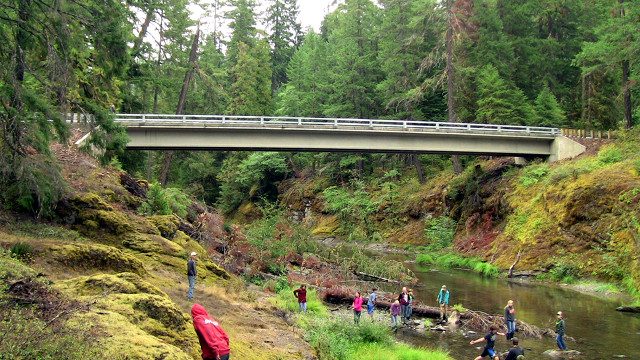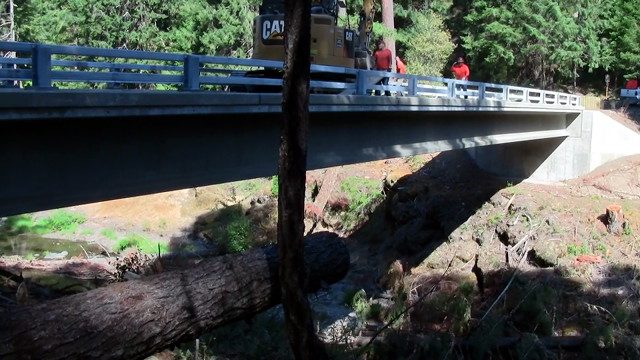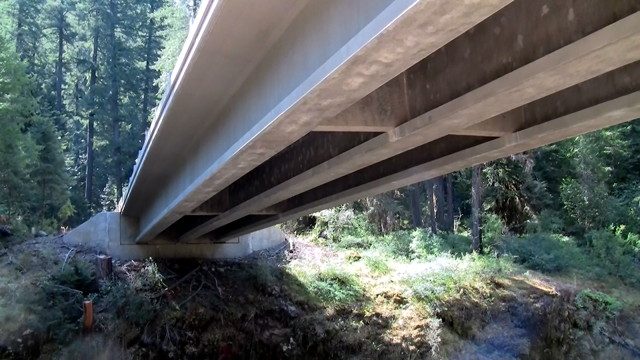Emerson Poison Bridge Project
In cooperation with the United States Forest Service as project lead
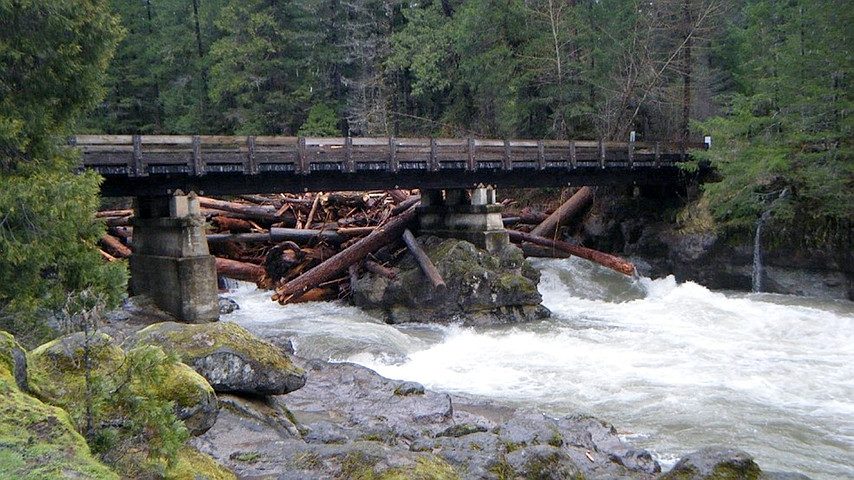
This bridge was old and made when standards for bridge building were not very sensitive to the environment. It was designed for one thing. Get the timber harvested on National Forest lands to the mills.
The structure was constructed using wood that was soaked with Pentachlorophenol and saturated with creosote. Both of these chemicals are extremely toxic to humans and aquatic species. Even if otherwise it had was a safety hazard at best.
The bridge site itself was a narrow point on the upper South Umpqua river. A massive natural rock outcropping supported the bridge midspan and each year large woody debris piled up and had to be removed to avoid the bridges destruction.
This was increasingly getting more expensive and dangerous to deal with. The location of these natural pile ups was historically a natural point in the river system that also accumulated the much needed gravel substrate for salmon spawning. For many reasons this bridge needed to be replaced. It’s true. The USFS is no longer exporting billions of board feet of timber from the common national forest trust of the USA public. That’s a good thing. Nevertheless the main road systems need to be maintained for ecological restoration and public access.
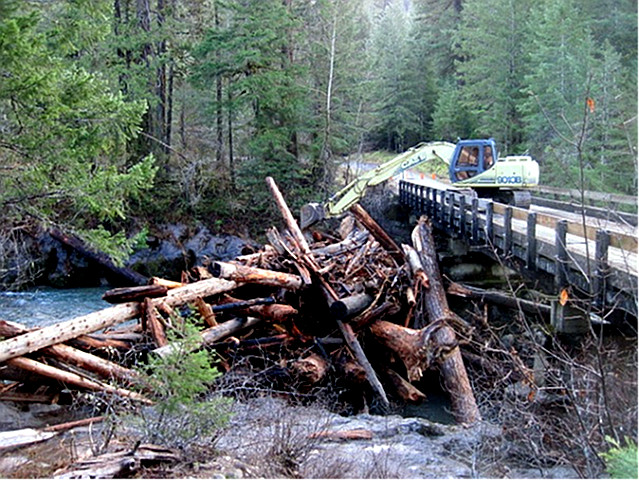
The Upper South Umpqua Spring Chinook population is on the verge of extinction. This salmon run once consisted of thousands of King Salmon (another name for the species). In 2018 a total of 28 adult salmon returned from the ocean. Strident efforts to preserve this fish run over the course of several decades have not succeeded. The USFS Tiller District biologists of Umpqua National Forest, the NOAA/National Marine Fisheries Service, the Oregon Dept. of Fish and Wildlife, the Oregon Watershed Enhancement Board and SURCP have partnered since 2006 to address degraded habitat in the river.
It was very evident that the annual excretion of toxic chemicals was one of many factors adversely impacting the salmon and sea run trout that spawned in the upper reaches of the river. Millions of dollars are being spent annually to add large woody debris to Oregon’s rivers and their tributaries. Thousands of citizens tax dollars were being spent each year removing large woody debris that accumulated at the bridge’s mid span. It was time to take the bridge down. SURCP and its partners began to make efforts to design a new bridge at a new location that would meet modern standards. A campaign ensued that would fund the project. Federal, State and private agencies pitched in to acquire the estimated 8+ million dollars it would take to get the task completed. Hazardous materials had to carefully be removed and disposed of. Any metal infrastructure from the old bridge had to be removed in a similar manner.
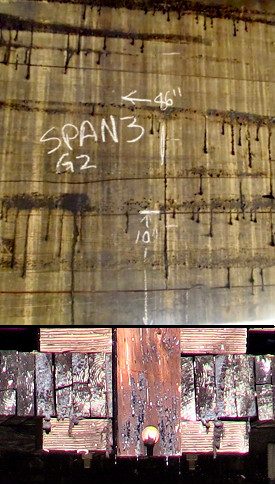
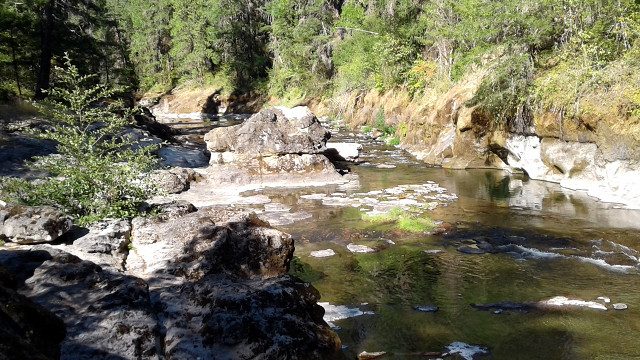
The removal of the bridge and the restoration of the river profile was monumental task. Great care had to be taken not to pollute the river. All of the poisonous material that had dripped onto the rock interface was removed also. Once it was done the fact that a bridge once existed there was hardly noticeable.
The next phase of the project consisted of removing the asphalt paving that led to and from the bridge. A segment of road leading to an intersection was decommissioned and a vernal wetland was reestablished at the site. The rest was left up to the natural world.
The historical pile up of large woody debris was also restored where the old bridge once stood. The aggradation of gravel for salmon spawning will once again occur. You can notice that currently the river is scoured down to bedrock. No spawning can take place there. The rock face with its wood deposit will go a long way to slow the river down long enough to allow gravel to drop out of the rushing winter waters and build up over time. It won’t be long and this segment of the river will once again function as it did in ancient times. We have the hope that Chinook, Coho, Steelhead trout and Sea Run Cutthroat trout, all of which are seriously threatened, will once again thrive.
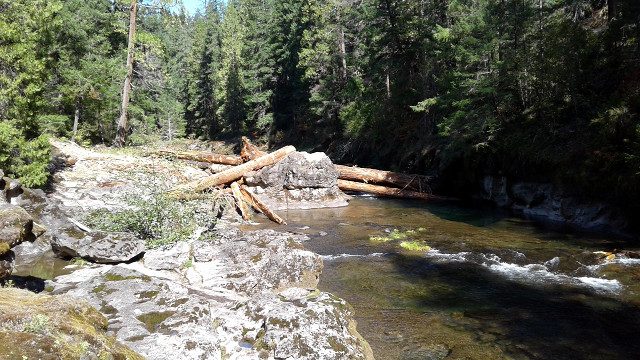
A New Bridge is Installed
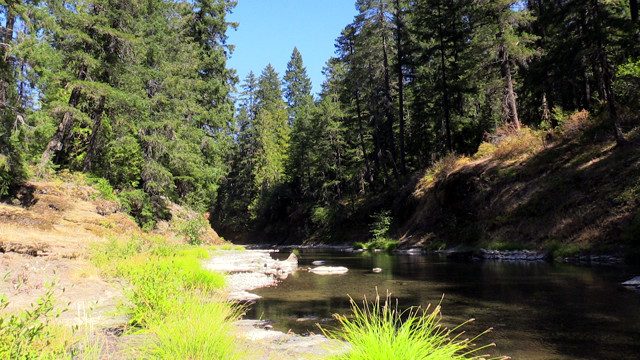
After several years of diligent effort to acquire funding for a new bridge, one that would meet much higher standards, design work was started for the new bridge. Knowing that the river was temperamental, having on many occasions reached incredible flood stage depths and furious hydrological force, it was determined that the lift of the bridge to be high enough above the measured flood plane to minimize problems. Not too far from the old bridge site along the adjacent forest service road the river cross section met the profile needed.
During the summer low flow period of the season the new prestressed concrete beams were installed. Each end of the bridge needed to be buttressed and a new bridge access had to be supplied. SURCP played a small but significant role in this project. The USFS did most of the heavy lifting. We were honored to participate in the accomplishment of this significant project for the good of the ecosystem.
